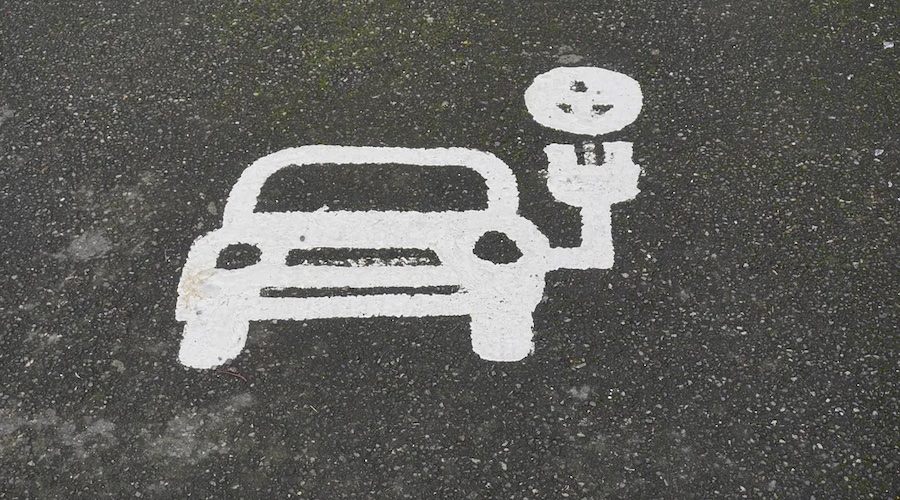Why California’s EV Policies Don’t Work for Minnesotans
Electric car parking symbol. Free public domain CC0 photo.
March 1, 2023
After the recent elections, the DFL Party controls the Minnesota House and Senate and the Governor’s office. Creating a 100% carbon-free Minnesota by 2040 is one of the DFL’s main priorities. To achieve this ambitious goal, policymakers are looking to copy and adopt some of California’s most extreme environment and vehicle policies right here in Minnesota. One of those policies includes banning the sale of new gas-powered cars by 2035. It’s crucial for Minnesotans to understand how this California-made rule would impact them and their families.
For one thing, electric vehicles are costly for the average Minnesota family. With inflation rates and costs rising exponentially this past year, it isn’t easy to budget another significant expense. Today, the lowest-cost electric car is still around $15,000 more than the cheapest gas car. Drivers on a fixed income who can’t afford EV prices should be able to choose which car best fits their needs and finances.
While federal investments into electric transportation have increased nationwide and electric vehicles have grown in popularity in some areas, many Americans are still unable to afford or access these EVs, due to their high costs and lack of accessibility to charging stations. Looking at Minnesota’s plan to increase the EV corridor, there would be large areas of Minnesota without access to charging stations, especially rural and low-income areas.
In addition, Minnesota’s agricultural economy depends on biofuel production. Agricultural companies rely on safe, efficient, and relatively inexpensive biofuels to supply their consumers. Implementing policies that devastate the state’s biofuels sector would ultimately harm residents’ finances and their livelihoods.
Also, according to the North American Electric Reliability Corporation (NERC), Minnesota already “has the highest risk of blackouts in the nation. Higher than California or Texas.” Adopting California’s EV policies could put Minnesota at even higher risk for electricity shortages and rolling blackouts during the hotter months of the year. The electrical grid’s supply would not be able to support the high demand of electric vehicles. Fast-tracking the electrification of Minnesota’s vehicle fleet puts residents and its infrastructure in danger.
One can look at California to understand how unfeasible some of these lofty proposals are. Under the guise of making energy more affordable and efficient, the California Air Resources Board voted to ban the sale of gasoline and diesel cars and trucks and replace them with a hundred percent electric vehicles by 2035. The stark jump from the current 14 percent of electric vehicle sales to at least 35 percent in less than four years is concerning for many families.
Doubling the number of electric-powered cars and trucks dependent on California’s electric grid system would be untenable. In the fall, the CA Independent System Operator sent a flex alert to all residents, urging them to decrease their electricity consumption. How do policy leaders believe that American families could balance restrictions on gas-powered cars without access to a stable and affordable electrical grid power system?
Minnesota legislators need only to talk to a suburban mom of four about getting her kids to school or sports practice. During the colder months, the technology for electric vehicles is compromised with the batteries not lasting as long. In addition, looking at the models of electric vehicles currently on the market, none are large enough to fit the kids from a carpool and their hockey equipment. Parents don’t need another burden to complicate their already-hectic commutes.
Many states, including Minnesota, have aligned with California’s energy policies. Minnesota also adopted its own “Clean Cars Standard,” modeled after California’s, which requires that by 2026, 35 percent of new cars sold would need to be electric, 68 percent by 2030, and 100 percent by 2035.
Minnesota has a choice to make: Either adopt the stricter California regulations, or loosen the guidelines and ensure a free marketplace for Minnesota residents. If adopting California’s policies is the direction that lawmakers want to go, they should be ready for the harsh, Minnesota-specific consequences.
One-size-fits-all regulations simply do not work across all 50 states. It’s up to Minnesotans to let our lawmakers know that freedom and choice are paramount. It’s time for our lawmakers to stand firm against irresponsible policy ideas during the 2023 legislative session.












